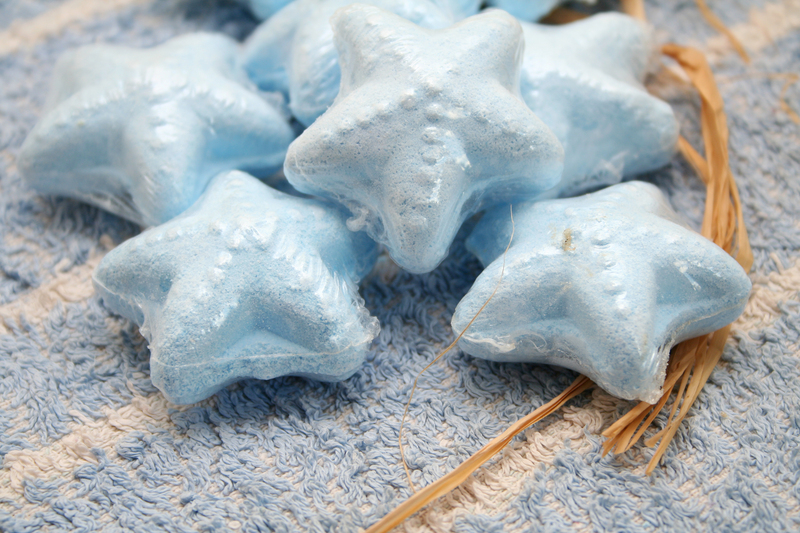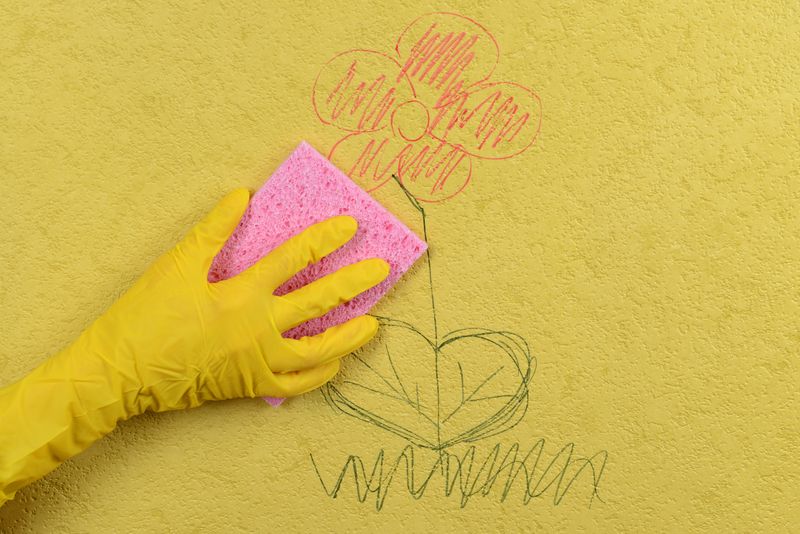Clean window sills free from mould with this approach
Posted on 19/08/2025
Clean Window Sills Free from Mould with This Approach: The Ultimate Guide
Mould on window sills is a common issue faced by many homeowners. Not only does it look unsightly, but it can also pose health risks if left untreated. Cleaning window sills free from mould is essential for maintaining a healthy and pleasant living environment. In this comprehensive guide, we'll explore the best techniques, tools, and tips to eliminate mould from window sills and prevent it from coming back.
Why Does Mould Grow on Window Sills?
Mould, also known as mildew, thrives in damp, humid conditions. Window sills are particularly susceptible because:
- Condensation often forms on and around windows, especially during colder months.
- Poor ventilation amplifies moisture build-up.
- Dust and organic matter collect on sills, providing nutrients for mould growth.
Understanding what causes mould on window sills can help you address the root of the problem, not just the symptom.

Health Risks Associated with Mould
Mould spores can trigger a range of reactions in humans. If you're wondering why it's crucial to clean window sills free from mould, consider these potential health risks:
- Allergic reactions - Sneezing, watery eyes, and skin irritation.
- Respiratory problems - Coughing, asthma attacks, or even chronic bronchitis.
- Weakened immune system - Especially a concern for children, elderly, or anyone with compromised immunity.
Prolonged exposure to mould can exacerbate chronic conditions and worsen indoor air quality. That's why prompt action is key.
Signs of Mould on Window Sills
How do you know if your window sills need a deep clean? Look out for these signs of mould and mildew:
- Black, green, or white spots on the sill or frame.
- Musty odour in the vicinity of windows.
- Visible condensation or pooling water around windows.
- Peeling paint or soft, crumbling wood on the sill.
If you notice any of these indicators, it's time to clean your window sills free from mould with the approach below.
Preparing to Remove Mould from Window Sills
Before you begin, gather the necessary tools and protective equipment. Here's what you'll need:
- Gloves - Protect your hands from mould and cleaning agents.
- Protective eyewear - Guard against splashes.
- Face mask - Prevent inhaling mould spores.
- Soft-bristled brush or old toothbrush - For scrubbing.
- Microfiber cloths - For wiping down surfaces.
- Spray bottle - For your cleaning solution.
Safety first: Always ensure the room is well-ventilated when removing mould from window sills. Open the window or use a fan to improve airflow.
The Step-by-Step Approach to Clean Window Sills Free from Mould
Step 1: Remove Surface Dust and Debris
Start by vacuuming or wiping the window sill to get rid of dust, cobwebs, and loose particles. This will make your mould removal process more effective.
Step 2: Mix the Right Cleaning Solution
There are several effective cleaning solutions for eliminating mould on window sills:
- White vinegar - Mix equal parts vinegar and water. Vinegar is a natural disinfectant and breaks down mould efficiently.
- Baking soda - Add 1-2 tablespoons of baking soda to 2 cups of water for a gentle abrasive effect.
- Hydrogen peroxide (3%) - Use directly for a powerful mould-killer (always test a hidden area first).
- Store-bought mould removers - Follow the manufacturer's instructions.
Pour your chosen solution into a spray bottle for easy application.
Step 3: Apply the Cleaning Solution
- Spray the affected area generously with your cleaning solution.
- Let it sit for at least 10-15 minutes. This dwell time allows the solution to break down the mould.
- For stubborn patches, apply a paste of baking soda and water directly onto the mould and allow it to sit.
Step 4: Scrub Away the Mould
- Use a soft-bristled brush or old toothbrush to gently scrub the window sill.
- Work in small sections to avoid spreading the spores further.
- Wipe up residue with a clean, damp microfiber cloth.
Repeat as necessary until all visible mould is gone.
Step 5: Rinse and Dry
- After scrubbing, wipe the window sill with a damp cloth to remove leftover cleaning solution.
- Once clean, dry the window sill thoroughly. Use a towel or allow it to air dry with good airflow.
Moisture is the main culprit behind future mould growth, so ensure the sill is completely dry!
How to Clean Wooden Window Sills from Mould
Wooden sills require extra care. Here's how to clean mould from wooden window sills:
- Avoid excess water; wood absorbs moisture quickly.
- Use diluted vinegar or mild dish soap solution instead of harsh chemicals.
- After cleaning, dry the wood thoroughly and consider applying a wood polish to restore shine and protection.
- If paint or wood is peeling, light sanding and repainting may be required after mould removal.
Act promptly to limit wood damage and keep your sills healthy.
Effective Natural Solutions for Window Sill Mould
If you prefer eco-friendly ways to clean window sills free from mould, try:
- Lemon juice with baking soda - Natural acid and abrasive combo.
- Tea tree oil spray - Add a few drops to water. Highly antifungal and leaves a fresh scent.
- Grapefruit seed extract - Few drops in a water bottle; effective against mildew.
Natural cleaners are gentle on the environment and family-friendly but may need repeated application for tough moulds.
Preventing Mould from Returning to Window Sills
Prevention is the best cure when it comes to keeping your window sills mould-free. Follow these tips:
- Improve airflow - Open windows when possible or use exhaust fans.
- Address leaks or condensation promptly. Wipe down any moisture regularly.
- Use a dehumidifier in rooms with chronic moisture issues.
- Clean window sills routinely with a mild cleaner to remove dust and spores before they settle.
- Check window seals - Replace worn-out or cracked seals that can let in rain and humidity.
Regular maintenance greatly reduces the chance of mould finding a home on your window sills again.
When to Call a Professional for Mould on Window Sills
If the infestation is:
- Larger than one square metre
- Recurring despite your best cleaning efforts
- Causing persistent health problems
Contact a professional mould remediation service. Large or deep mould may indicate hidden water intrusion or more widespread contamination behind walls and might need special treatment.

Frequently Asked Questions
- Can bleach be used for mould on window sills?
While bleach can remove surface mould stains, it does not fully penetrate porous materials like wood or plaster and may cause damage. Natural alternatives such as vinegar are safer and more effective in the long term. - How often should I clean my window sills to prevent mould?
A monthly wipe-down using a mild cleaner or vinegar solution is usually sufficient. - Does mould on window sills mean my home has structural issues?
In most cases, mould on window sills is due to condensation and poor ventilation, not major structural failure. However, if you find extensive or persistent mould, inspect for leaks or hidden water damage.
Conclusion: How to Clean Window Sills Free from Mould and Keep Them Fresh
With the right approach, cleaning window sills free from mould becomes a straightforward part of your home care routine. Regular attention, the right cleaning solutions, and good ventilation will not only eliminate current mould but keep it from returning. Remember:
- Identify and address the cause of mould (usually excess moisture).
- Use safe, effective cleaners such as vinegar, baking soda, or commercial removers.
- Scrub gently, rinse well, and always dry completely.
- Perform regular maintenance for lasting results.
Enjoy cleaner, healthier, and more attractive window sills with these actionable tips! By following this ultimate guide to cleaning window sills free from mould, you'll protect not just your home's appearance but the well-being of everyone inside.
```





